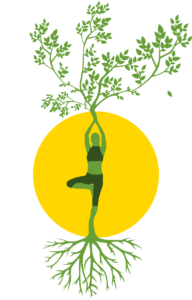
Learning the Lingo of Living Green
It used to just be called being green. Now there are so many terms it can become confusing. I remember the first time I read about Permaculture. I thought to myself, wow that is exactly what I was thinking…who knew there was a name! If you are new to this all, here is a quick guide to some popular terms. These are basic definitions and I highly recommend reading more about each one.
Homesteading
Homesteading is living a life where you try to be more self-sufficient. Raising food to eat whether it be fruits and vegetables or animals. Canning and preserving so you can have food all winter. It is a lifestyle which allows you to provide for yourself and be self reliant. I’ve read fascinating stories about people homesteading in cities and suburbs. It’s more typical for those with a half acre or more, but you can do it in your own backyard. Or you can go extreme and go off grid (no ComEd or Nicor) with solar panels or wind turbines and be completely self-reliant.
Permaculture
I first read about Permaculture in Mother Earth News. According to their article from 2011, “Permaculture is essentially about creating beneficial relationships between individual elements and making sure energy is captured rather than lost in a system. Its application is only as limited as our imagination.” The 12 design principles include ideas like Earth Care, People care, and Sharing Resources. There are methods to gardening by using native plants and making zones in your yard. It’s a fascinating topic with lots of resources out there.
Vermiculture, Vermicomposting
Vermiculture is the cultivation of worms for a special purpose. Vermicomposting is cultivating the worms to use to compost food. The worms eat your kitchen scraps and turn them into compost you can use in your garden. You can also make things like “worm tea” to fertilize your garden. Commercial kits are available, but you can also make a worm bin with something as simple as a Rubbermaid tub with ventilation holes cut into it. It’s a great way to reduce your kitchen waste and get great fertilizer for your garden.
Native plants
Native plants are just as they sound…plants native to a certain region or area. Native plants are beautiful and lower maintenance because they don’t need to adapt to the environment. They also often attract pollinators like bees and butterflies. On our property, we are trying to eradicate the nasty invasive species like buckthorn and allow the native plants below to reemerge. Plus we are adding some new natives around as part of our landscaping. Check out my post on Spring Ephemerals for some great resources.
Upcycle
Upcycling is reusing something for a different purpose. If you are crafty it can be a lot of fun. For one Halloween, my husband built my son a garbage truck to ride in while he went trick or treating. He added these metal tubes to look like the exhaust pipes on top. When I asked him where he found them, he said that when his eldest son’s bed broke, he saw them on the legs and saved them because they just looked like something he might use one day!
The list could go on and on, but hopefully it gives you some inspiration for little things you can start to do at home. Maybe you are not ready for Homesteading and Permaculture, but try something….skip that extra napkin or upcycle something you have at home.




0 Comments